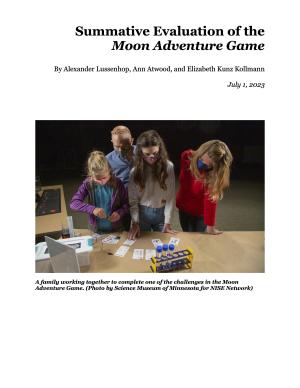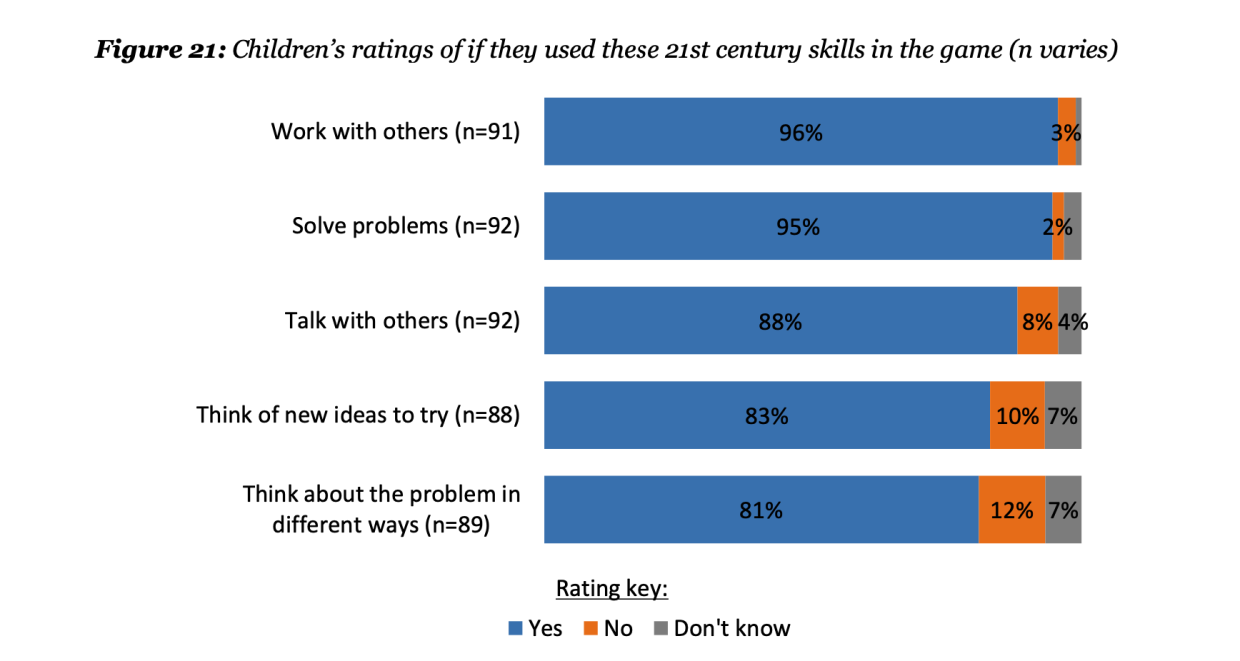
A summative evaluation study of the Moon Adventure Game was recently completed focusing on impacts of the game on participating public and professional audiences. The complete summative evaluation report is now available for review.
Findings:
-
After playing the game, participants felt:
-
More interested in Moon science and space exploration,
-
More knowledgeable about Moon science and space exploration,
-
More confident that they could learn more about Moon science and space exploration in the future, and
-
A stronger sense of science identity.
-
-
Participants practiced 21st century skills related to collaboration, problem solving, critical thinking, and innovation through playing the game.
-
Professionals reported high levels of confidence, comfort, and motivation to engage publics in learning about Moon science and space exploration, and about half said that the Moon Adventure Game had a strong influence on these attitudes.
About the Game
The Moon Adventure Game is a challenge-based immersive game, inspired by “escape room” experiences, which asks visitors to take on activities to help them think about what people might need to live and work on the Moon. The game is designed for three to six players and is intended to be played live with support from a facilitator. The 25-minute gameplay involves five challenges that incorporate scientific concepts connected to lunar exploration, as well as introduction and closing elements. For more information about the game, visit https://www.nisenet.org/moongame.

Public audience finding highlights
Public questions focused on:
- Who and how many members of the public do educational products reach?
- How do the educational products impact the public’s engagement and learning related to space exploration, science, and engineering?
Below is a small selection of findings from the public engagement, please see the full summative evaluation report for more context and details.





Professional audience highlights
Professional questions focused on:
- What kinds and how many professionals does the project reach?
- How do the educational products impact professionals’ attitudes related to engaging the public in learning about space exploration, science, and engineering?
- What kinds of partnerships are formed between museums and community organizations through the project?
Below is a small selection of findings about participating professionals, please see the full summative evaluation report for more context and details.

Acknowledgements
Many thanks to the report authors Alexander Lussenhop, Ann Atwood, and Elizabeth Kunz Kollmann of the Museum of Science, and the project leadership and kit development team members from Arizona Science Center, Arizona State University (ASU), Children’s Creativity Museum, Emily Maletz Graphic Design, Museum of Life and Science, Sciencenter, and Science Museum of Minnesota who contributed to the evaluation by providing feedback on the study design and instruments throughout the project.
We would also like to thank the sites who collected data with public audiences for this evaluation. These institutions included:
-
Arizona Science Center (Phoenix, AZ)
-
Cape Cod Museum of Natural History (Brewster, MA)
-
Explorations V Children’s Museum (Lakeland, FL)
-
Ingram Planetarium (Sunset Beach, NC)
-
McAuliffe-Shepard Discovery Center (Concord, NH)
-
Museum of Life and Science (Durham, NC)
-
Sciencenter (Ithaca, NY)
Thank you as well to Alison Cook-Davis and Kristi Eustace from ASU’s University Office of Evaluation and Educational Effectiveness (UOEEE) who conducted the formative evaluation of the game.
This material is based upon work supported by NASA under grant number 80NSSC18K1219. Any opinions, findings, and conclusions or recommendations expressed in this material are those of the author(s) and do not necessarily reflect the views of NASA.
